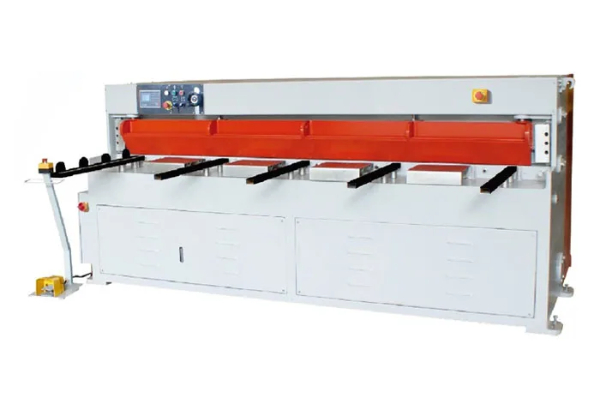
Key Considerations When Choosing a Steel Strip Slitting Machine
- By:Metmac
- 2024-05-11
- 221
Steel strip slitting machines are vital equipment in the metalworking industry, used to cut metal coils into narrow strips of various widths. Choosing the right slitting machine is crucial for efficient production and meeting specific application requirements. Here are some key considerations to keep in mind when selecting a steel strip slitting machine:
Strip Thickness and Width Range
The thickness and width range of the steel strips you intend to process should determine the capacity of the slitting machine. Machines are designed to handle specific thickness and width ranges, and it is important to ensure the machine you choose can accommodate the dimensions of your materials. Consider the minimum and maximum thickness and width of the strips you need to produce to narrow down your options.
Material Type and Hardness
The type of steel and its hardness influence the performance and efficiency of the slitting machine. Different materials require different blade configurations and cutting forces. For example, high-strength steel or stainless steel requires more robust machines with specialized blades. Determine the specific material properties you will be working with to select a slitting machine with the appropriate capabilities.
Required Slitting Accuracy and Edge Quality
The accuracy and edge quality of the slit strips are critical for downstream processes such as welding or fabrication. High-precision slitting machines ensure minimal burrs, clean edges, and precise strip widths. Consider the tolerance requirements and the surface finish you desire for your application. Machines with advanced control systems and precision blades can deliver superior slitting quality.
Production Volume and Speed
The production volume and desired slitting speed must also be taken into account. Machines vary in their capacity to handle high-volume production and maintain efficiency at specific speeds. If you require high throughput, opt for machines with fast cycle times and automated features. Consider the average volume of strips you need to produce per hour or day to determine the appropriate production capacity.
Blade Configuration and Maintenance
The blade configuration and maintenance requirements of the slitting machine are essential factors to consider. Machines can have different numbers of blades, blade spacing options, and blade types. Select a machine that allows for easy blade adjustment, replacement, and sharpening. Proper blade maintenance is crucial for consistent slitting performance and minimizing downtime.
Automation and Control Features
Modern steel strip slitting machines incorporate various automation and control features to enhance efficiency and reduce operator dependency. Consider machines with automated coil loading, strip stacking, and edge tracking systems. Advanced control systems provide real-time monitoring, data logging, and remote access capabilities, enabling operators to optimize the slitting process remotely.
Safety and Maintenance
Safety and maintenance are paramount when operating slitting machines. Choose machines that comply with industry safety standards and provide adequate protection for operators. Consider machines with features such as emergency stop buttons, guards, and interlocks. Regular maintenance is essential for optimal performance and longevity of the machine, so consider accessibility for maintenance and the availability of spare parts.
By carefully considering these key factors, you can select a steel strip slitting machine that aligns with your specific application requirements and ensures efficient and precise slitting operations.
-
Advanced Sheet Metal Rolling, Cutting, and Folding Machines for Efficient Fabrication
2025/10/22 -
High-Precision Sheet Metal Bending and Cutting Solutions for Modern Manufacturing
2025/10/22 -
High-Precision Solutions from Leading Sheet Metal Cutting Machine Manufacturers
2025/09/11 -
Reliable Sheet Metal Equipment for Sale to Support Precision Fabrication
2025/07/17
-
Advanced Sheet Metal Rolling, Laser Cutting, and Folding Machines for Precision Fabrication
2025/10/31 -
High-Performance Sheet Metal Bending and Cutting Machines for Modern Fabrication
2025/10/31 -
High-Quality Sheet Metal Equipment for Sale: Efficient Solutions for Modern Manufacturing
2025/10/31 -
High-Performance Sheet Metal Equipment for Sale: Forming and Shearing Solutions for Modern Fabrication
2025/10/22
-
A Guide to the Latest Innovations in Sheet Metal Folding Machines
2024/11/29 -
Key Features to Consider When Investing in a Sheet Metal Folding Machine
2024/11/28 -
Enhancing Precision with Advanced Sheet Metal Folding Machines
2024/11/27 -
How to Choose the Right Sheet Metal Folding Machine for Your Workshop
2024/11/26






